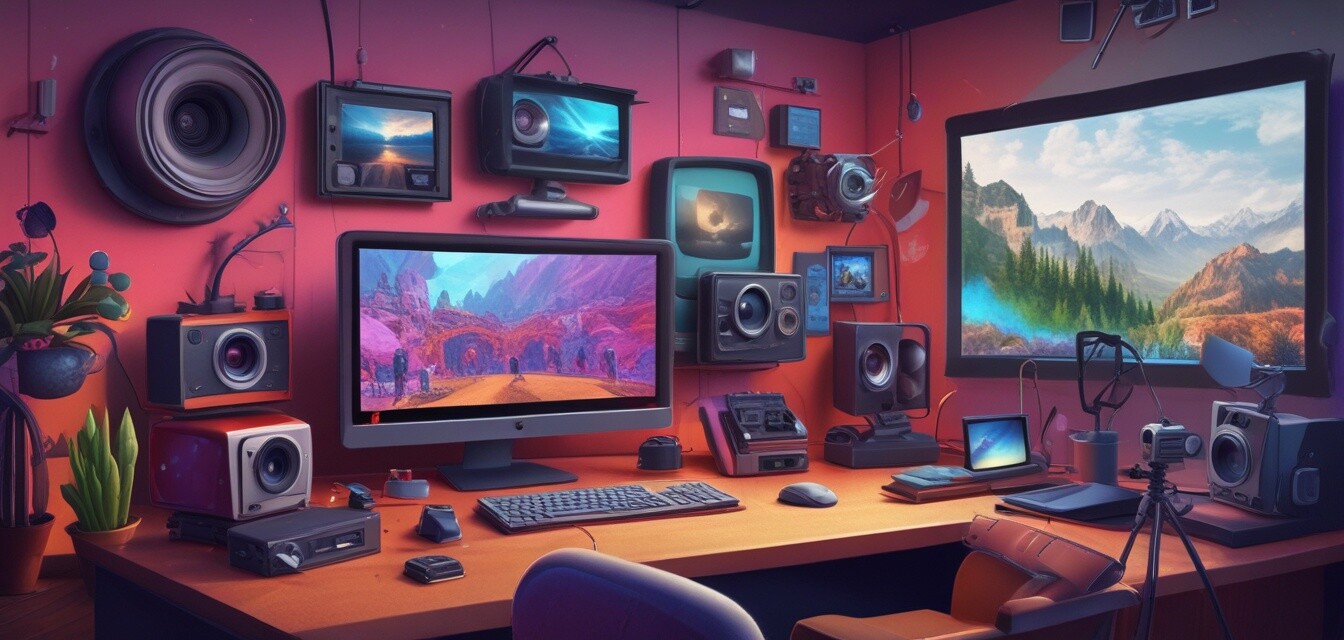
Budget vs. High-End Webcams: The Market in 2025
Key Takeaways
- The webcam market is evolving rapidly with new technologies.
- Budget webcams are more accessible but may lack advanced features.
- High-end webcams offer premium features for professionals and gamers.
- Choosing the right webcam depends on individual needs and usage scenarios.
- Price isn't the only indicator of quality; consider features that matter most to you.
The webcam market in 2025 is characterized by a diverse range of options, from budget-friendly models to high-end devices packed with advanced features. As more people rely on webcams for work, gaming, and streaming, understanding what separates budget webcams from high-end alternatives becomes essential. This article delves into the current landscape of webcam offerings, comparing their features, uses, and value.
Understanding the webcam market
Webcams have become indispensable tools in both personal and professional arenas. Whether for video conferencing, streaming, or casual chats, having the right webcam can significantly influence the quality and experience. Let’s explore the major factors that affect the webcam market today.
Market trends
As we move through 2025, several trends are shaping the webcam market:
- Increased demand for higher resolution and better frame rates.
- Integrating AI technology for enhanced image quality.
- Growing popularity of streaming and online gaming.
- Emphasis on privacy features and security.
Budget webcams
Budget webcams typically range from $20 to $100 and are perfect for casual users. Let’s look at some characteristics:
Pros
- Cost-effective for basic needs.
- Good for casual video calls and meetings.
- Easy to set up and use.
- Portable and lightweight.
Cons
- Lower image and video quality.
- Limited features and functionality.
- May not suit professional use or streaming.
High-end webcams
High-end webcams usually cost anywhere from $100 to $300 or more, appealing to professionals and serious gamers. Here’s what they offer:
Pros
- Superior video quality and resolution.
- Advanced features like autofocus and light correction.
- Longer lifespan and durability.
- Better customization options for streaming and gaming.
Cons
- Higher initial investment.
- May require additional accessories for optimal use.
- Overkill for basic users.
Comparison of budget and high-end webcams
To give a clearer picture of the differences, here’s a comparison table highlighting key features:
| Feature | Budget Webcams | High-End Webcams |
|---|---|---|
| Price Range | $20 - $100 | $100 - $300+ |
| Video Quality | 720p to 1080p | 1080p to 4K |
| Features | Basic controls | AI enhancements, filters, and effects |
| Intended Use | Casual video chats | Streaming and professional content creation |
| Build Quality | Plastic, lighter | Higher quality materials, sturdier |
Choosing the right webcam for your needs
When selecting a webcam, your needs and preferences should guide your choice. Consider the following questions:
- What is your primary use for the webcam? (e.g., casual chats, professional meetings, or high-stakes gaming)
- What quality level do you require? (e.g., 720p vs. 1080p vs. 4K)
- Are you willing to invest in additional features or equipment?
- What is your budget range?
Future outlook
As we look towards the future, advancements in webcam technology will continue to shape the market. Expect improvements in AI integration, higher video resolutions, and enhanced user customization options. Furthermore, with the rising trend of remote work and online content creation, webcams will remain a critical component in our digital lives, ensuring quality communication and connectivity.
Stay informed about the latest developments in the webcam market and explore various budget webcams or conference webcams that suit your needs.
Conclusion
Deciding between a budget or high-end webcam ultimately comes down to your specific needs and uses. By understanding the differences in features, quality, and price, you can make an informed decision that will enhance your online communication and gameplay experience as we head into 2025.